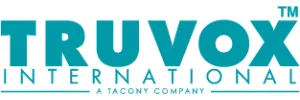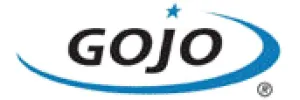Our Blog
Our treasure trove of resources, tips and tricks

Posted on 30 December 2010 by Ceris Burns
Market entry – Which method for you?
In our practical series about international marketing, Ceris Burns, international marketing specialist for the cleaning industry considers the different market entry methods and how to select the one that best suits your business.
For a company about to trade internationally, market entry is often seen as the first critical step not only for financial reasons but also because it will set a structure for future international activity. It will determine sales to be had and provide a source of valuable market insight. There are at least 15 different market entry methods used commonly in international business today, so how do you fathom out which is best suited to your company? Let’s take a look at some of the methods and reasons for using them.
The market entry method you choose could be indirect (piggybacking), direct (agent/distributors), a cooperation (joint venture/strategic alliance) or a direct investment (subsidiary or acquisition) and each of these groups will require a varying level of international involvement from you. So your choice of method should be based upon the level of involvement and marketing control your company wishes to have, against the financial and marketing risks.
Domestic purchasing for example (indirect) where the company makes product available for others to export but does nothing to market internationally itself, requires a minimal level of international involvement whereas a company that chooses to operate wholly owned subsidiaries must be prepared to give total involvement. The level of involvement also tends to have serious control and risk implications where higher levels of involvement can bring greater potential for country marketing control and also higher risk due to increased costs. Joint ventures and strategic alliances tend to be popular as they can offer higher levels of control at lower risk and cost provided that the companies cooperate and their objectives are compatible.
If you are reading this I guess that you are most likely considering long term involvement. Unless you already have direct investments in other countries or have identified major potential in your next export market, a direct exporting method could be a good mid level solution for you. This would mean working with overseas agents or distributors, setting up a franchise, management contract or doing direct marketing to the country in question. All of these methods can help you to secure a long term presence in a given market for a low investment and without having significant effects on existing operations. You would be able to exert more influence over marketing activity and to gain a detailed knowledge of the market. The down side would be that your involvement with respect to administration, distribution and marketing would be much higher than indirect methods so you would need to consider market opportunity in order to justify the investment.
Agents i.e individuals or companies which are contracted to obtain orders on behalf of exporters, are the most common method of low cost direct exporting. From my own experience however, finding the right agent and getting them to perform consistently is not always that simple.
A cleaning products manufacturer I know appointed an agent in Dubai and in the early stages it appeared to be a match made in heaven. After the first year however several disagreements were had about points not covered by the memorandum signed. The manufacturer had appointed an agent in Turkey and as a result the agent in Dubai felt betrayed as he had understood that Turkey was within his Middle Eastern territory. Similarly the commission structure for higher volume sales was questioned and a misunderstanding about the reimbursement of marketing costs came to the fore. The agent lost interest and shifted his focus to other brands. Unable to put things right the relationship quickly came to an end.
The motto of the story is…, if selecting an agent or distributor take time in the early stages to clarify expectations and to formalise the relationship in a detailed written contract. To get the most from a partner you must recruit them in a professional manner just as you would if recruiting a member of staff. Assess their suitability alongside predetermined essential criteria such as company financial strength, contact with potential customers, complementary products, location and premises, sales resources and check where your products will sit in the pecking order. Once appointed, achieve a long term satisfactory relationship by motivating the agent, providing adequate ongoing support and ensuring two-way communication.
For further advice on agents/distributors or other market entry methods email ceris@cbimarketing.com
ENDS
As published in C&M magazine March 2010.
Categories
- Branding
- Crisis Management
- Digital PR
- Environmental PR
- General News
- Guest Blogs
- International Insight
- Our Blog
- SEO Updates
- Social Media
- Uncategorised
Experts in Public Relations Services & Communications Management
Our ServicesGenuine industry specialists in cleaning and hygiene, environmental and recycling, and facilities management
Our Sectors












